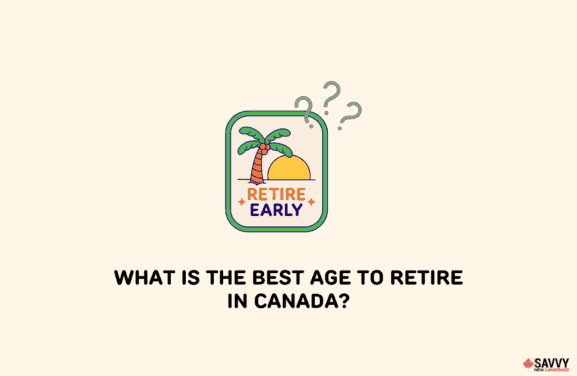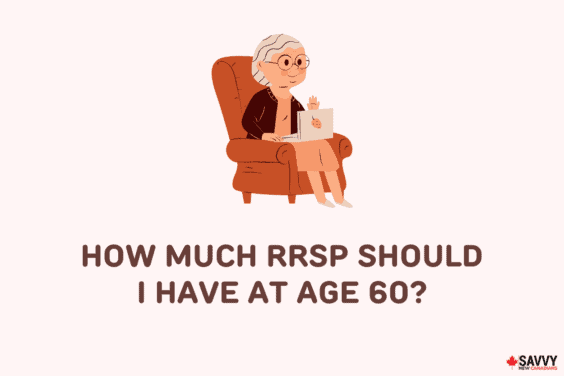When you are turning 65 or getting to the ripe golden age of 71, there are several financial steps you should be taking to put your retirement finances in order.
Age 65 is the standard age often associated with retirement in Canada and is when full pension benefits like the OAS and CPP become available.
At age 71, some major changes affect your RRSP account, which is one of the mainstays of Canada’s retirement income system. These changes are discussed in further detail below.
How Much Do You Need To Retire in Canada?
Before digging into the specific financial steps you should consider taking at 65 and 71, let’s quickly look at this all-important question readers ask me all the time.
There is no one specific number that works for everyone.
It could be the average of $765,000, as polled by a majority of Canadians in 2018, it could be $1 million, and it could be several million dollars.
There are some popular ways to calculate retirement income needs, starting with the 4% withdrawal rate and all the way down to your pre-retirement income at a multiple of 10.
Whichever calculation you choose, deduct your expected government benefits to arrive at how much you need to save up.
For an in-depth look into various retirement calculations, check out this article.
Related Posts:
- 10 Financial Steps To Take Before Retirement – your pre-retirement checklist
- The Complete Guide To Retirement Income in Canada
Financial Steps For Age 65
If you are saying “hello” to retirement at age 65, here are the income sources you should absolutely take a look at:
Old Age Security Pension (OAS)
OAS is the #1 pillar of Canada’s retirement income system. It is a universal benefit that seniors become eligible to receive when they turn 65.
The OAS was designed to replace about 15% of your pre-retirement salary, and only those who have lived in Canada for at least 40 years after turning 18 can expect to get the full OAS benefit.
The current maximum monthly OAS benefit in 2023 is $707.68 or $8,492.16 per year if you are 65-74 years old. For seniors aged 75+, the maximum monthly OAS benefit is $778.45 or $9,341.40 per year.
Like the CPP, you can delay when you take OAS to receive a monthly increase of 0.6% and up to a 36% increase at age 70 (i.e. 0.60% x 60 months). OAS payments must commence by age 70.
Some reasons why you may choose to defer OAS payouts for later include:
– If you are still working and do not want to move into a higher tax bracket.
– If your other incomes put you in the OAS claw-back income range between ages 65-70
As of 2023, your OAS starts to get clawed back if your income exceeds $81,761 and reduces to $0 once you surpass the $142,609 / $148,179 income threshold.
Learn about the ten detailed strategies for minimizing OAS clawback.
If you are eligible to receive the Guaranteed Income Supplement, you do not want to defer OAS till later, as you can only get GIS if you are receiving OAS.
Related:
- The OAS Explained
- CPP and OAS Benefits For Surviving Spouses and Children
- Understanding the Canada Pension Plan
Canada Pension Plan (CPP)
CPP is pillar #2 of retirement income in Canada. The full CPP benefit becomes available to seniors who reach age 65 and who have contributed to the program during their working years.
For 2023, the maximum monthly CPP is $1,306.57. Most people will not receive the maximum CPP payout.
There are options to take CPP early at age 60 (less 0.60% per month before age 65) or to delay it till age 70 (plus 0.70% per month after age 65).
Taking CPP Early: Some reasons why you may want to take CPP payments early include:
- Shorter life expectancy
- Limited alternative sources of income
- If you have stopped working
Taking CPP Later: Scenarios where taking CPP later may make sense include if:
- You are still working
- Have average or better than average life expectancy
- Have other sources of cash flow, etc.
These are a few of several factors to look at when deciding on CPP. It may help to get a financial advisor to look closely at your specific numbers.
RRSP Conversion Options
Your Registered Retirement Savings Plan (RRSP) will see some compulsory changes soon (when you turn 71), but for now, you need to start thinking ahead about how you want to generate retirement income from your RRSP.
Because RRSP withdrawals are taxed, you should also start thinking about tax consequences during your draw-down phase.
You can still contribute to your RRSP until age 71, so if you have available contribution room from previous years, consider using it up – by either contributing to your own RRSP or a spousal RRSP.
Mind you, if you have a TFSA contribution room as well, it makes sense (in most cases) to fund your TFSA first. For more details on choosing a TFSA over an RRSP, click here.
Related:

Workplace Pension Benefits
These include defined benefit and defined contribution plans.
Defined benefit plans will pay you a pre-determined monthly income for life, while defined contribution plans pay you income based on what the plan assets are when you retire – no guarantees.
If you have left employment where you had access to a pension plan, these funds may now be held in a Locked-in Retirement Account (LIRA) or Locked-in RRSP (LRSP), and will not be available to you until you reach the minimum pension age for your province – usually 55 years.
From age 55 (or 50 years in Alberta), you can convert your LIRA to a series of accounts, including a LIF and Life Annuity, to generate retirement income.
Related: What is a Life Annuity?
Other things to consider:
Pension Income Tax Credit: At age 65, you become eligible to claim the Pension Income Tax Credit on the income you receive from an RRIF, LIF, or Life Annuity.
The impact of this is that you may not need to pay taxes on up to $2,000 of eligible income, equivalent to a maximum savings of $300 per year.
Related: The Pension Income Tax Credit Explained
Pension Income Splitting: Couples are allowed to split up to 50% of pension income (e.g. LIF and RRIF) in a way that minimizes their combined tax burden.
Financial Steps For Age 71
At 71, you will already be receiving OAS and CPP benefits (if eligible) since you cannot delay them beyond age 70.
Some of the important financial details to note:
Compulsory RRSP Conversion
At 71, you must close your RRSP accounts by either taking out the cash, converting it into an RRIF or annuity, or doing a combination of these options.
Cash – When you withdraw your RRSP in cash, taxes are due immediately, and withholding taxes up to 31% are held back by the bank.
Registered Retirement Income Fund (RRIF) – An RRIF pays you a regular income from your RRSP assets, and you can invest in pretty much the same investments you had in your RRSP.
A minimum withdrawal amount is set based on your age, account size, and percentage determined by the government.
You can withdraw more than the minimum if you want. You can also delay RRIF withdrawals until the year after you open your RRIF account.
Annuity: An annuity is an insurance product that pays you regular income either for a fixed term or for life.
At age 71, you can make a final RRSP contribution if you have contribution room left or have earned some income during the year. If your spouse is younger than 71, you can continue to contribute to a spousal RRSP.
Similar to the RRSP, a LIRA must also be converted at age 71 to a LIF or Life Annuity.
Wrapping Up
Retirement planning requires that you look at the big picture to choose what is best for you.
Think about how government benefits complement your personal savings and investments, how to minimize taxes, how to ensure you do not run out of money, how to plan for your estate, and more.
In many cases, it may be beneficial to go over several scenarios with your financial advisor/retirement planner to design your customized retirement financial plan.
If you have not yet created a will, do so now so your wishes are respected when you pass. You can create a legal will online in 15-20 minutes using LegalWills. It costs less than $50, and when you enter the promo code SAVVY20, you get an extra 20% off.
Related reading:
- All You Need To Know About The RRSP
- The Complete Guide To Robo-Advisor Investing in Canada
- Understanding RRIFs
- What Happens To An RRSP, RRIF, and TFSA After Death?
- How To Transfer Your RRSP, TFSA, and RESP Between Banks
- 5 Ways To Invest Your TFSA
- The Risks You Face When You Invest
Freebies!
1. EQ Bank: EQ Bank can help you save on banking fees while rewarding you with a 0.5% cash back every time you spend.
EQ Bank Card

Earn up to 4%* interest on your balance
0.50% cash back on purchases
No monthly account or FX fees
Free ATM withdrawals
2. Wealthsimple: Try Wealthsimple, the most popular robo-advisor in Canada and enjoy low-cost ETF investing that is hassle-free and maximizes your returns while lowering your investment fees. You receive a cash bonus after depositing your first $500.
Wealthsimple Invest

Professionally managed ETF portfolios
Multiple account types
Auto rebalancing and div reinvesting
Get a $25 bonus with a $500 deposit





Enjoyed your write-up. on the financial steps to take at age 65 and 71 in Canada. Keep it up
@Olusegun: Glad to hear you found this useful. Cheers.